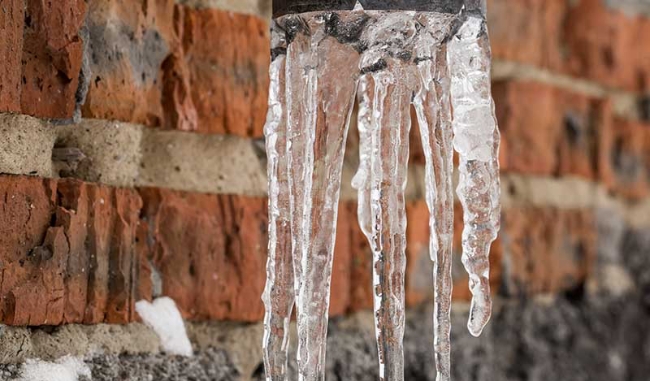Essential Tips to Prevent Frozen Plumbing in Cold Weather: Expert Insights
Essential Tips to Prevent Frozen Plumbing in Cold Weather: Expert Insights
Blog Article
In this article below you can locate a good deal of worthwhile answers pertaining to Winter Plumbing Precautions: Preventing Frozen Pipes.

Winter can ruin your plumbing, particularly by freezing pipelines. Right here's just how to avoid it from happening and what to do if it does.
Intro
As temperatures decrease, the risk of icy pipelines boosts, possibly resulting in pricey repair work and water damages. Understanding just how to avoid icy pipelines is essential for house owners in cool climates.
Comprehending Icy Pipelines
What creates pipelines to ice up?
Pipelines ice up when exposed to temperatures below 32 ° F (0 ° C) for prolonged durations. As water inside the pipelines ices up, it increases, putting pressure on the pipe walls and potentially causing them to burst.
Risks and damages
Icy pipelines can bring about water disruptions, home damages, and expensive repairs. Burst pipelines can flooding homes and trigger considerable structural damage.
Indicators of Frozen Pipes
Identifying icy pipes early can prevent them from breaking.
How to recognize frozen pipelines
Try to find decreased water circulation from faucets, uncommon smells or noises from pipelines, and visible frost on revealed pipes.
Prevention Tips
Protecting vulnerable pipes
Cover pipelines in insulation sleeves or use warm tape to shield them from freezing temperatures. Concentrate on pipelines in unheated or outside locations of the home.
Home heating techniques
Keep interior areas properly heated up, particularly locations with pipes. Open up cabinet doors to enable warm air to distribute around pipelines under sinks.
Securing Exterior Pipes
Yard pipes and outside faucets
Separate and drain pipes yard pipes before winter season. Install frost-proof spigots or cover exterior taps with protected caps.
What to Do If Your Pipes Freeze
Immediate actions to take
If you think frozen pipelines, keep faucets open up to eliminate pressure as the ice thaws. Utilize a hairdryer or towels taken in hot water to thaw pipes slowly.
Long-Term Solutions
Structural modifications
Consider rerouting pipes away from outside walls or unheated locations. Add added insulation to attics, cellars, and crawl spaces.
Upgrading insulation
Purchase premium insulation for pipelines, attic rooms, and walls. Appropriate insulation aids maintain constant temperature levels and decreases the danger of icy pipelines.
Conclusion
Protecting against icy pipes requires positive procedures and fast feedbacks. By understanding the causes, indications, and preventive measures, homeowners can safeguard their plumbing during cold weather.
5 Ways to Prevent Frozen Pipes
Drain Outdoor Faucets and Disconnect Hoses
First, close the shut-off valve that controls the flow of water in the pipe to your outdoor faucet. Then, head outside to disconnect and drain your hose and open the outdoor faucet to allow the water to completely drain out of the line. Turn off the faucet when done. Finally, head back to the shut-off valve and drain the remaining water inside the pipe into a bucket or container. Additionally, if you have a home irrigation system, you should consider hiring an expert to clear the system of water each year.
Insulate Pipes
One of the best and most cost-effective methods for preventing frozen water pipes is to wrap your pipes with insulation. This is especially important for areas in your home that aren’t exposed to heat, such as an attic. We suggest using foam sleeves, which can typically be found at your local hardware store.
Keep Heat Running at 65
Your pipes are located inside your walls, and the temperature there is much colder than the rest of the house. To prevent your pipes from freezing, The Insurance Information Institute suggests that you keep your home heated to at least 65 degrees, even when traveling. You may want to invest in smart devices that can keep an eye on the temperature in your home while you’re away.
Leave Water Dripping
Moving water — even a small trickle — can prevent ice from forming inside your pipes. When freezing temps are imminent, start a drip of water from all faucets that serve exposed pipes. Leaving a few faucets running will also help relieve pressure inside the pipes and help prevent a rupture if the water inside freezes.
Open Cupboard Doors
Warm your kitchen and bathroom pipes by opening cupboards and vanities. You should also leave your interior doors ajar to help warm air circulate evenly throughout your home.

Do you appreciate more info about How to prepare your home plumbing for winter weather? Make a review below. We will be glad to see your views about this blog post. In hopes that you visit us again before long. In case you enjoyed reading our blog entry plz do not forget to pass it around. I appreciate reading our article about 6 Ways to Prevent Frozen Pipes.
Book 24/7 Report this page